
View of the Sala dei Giganti (south and west walls) by GIULIO ROMANO
The heavens are closed, in a manner that is characteristic of Giulio Romano 's art, that combines an invented reality with an artificial space. The twelve columns, almost hidden by a cloud, support the imaginary part of the cupola and trace another circle, a third one with respect to the one formed by the clouds and the one created by the canopy.

Sala dei Giganti di Giulio Romano analisi
Sala dei Giganti (Chamber of the Giants) Apr 15, 2021 737. THE PALAZZO DEL TÈ WAS built in the 16th century as a leisure palace for Federico II Gonzaga, Marquess of Mantua. Italian artist and architect Giulio Romano, who had been a student of Raphael, designed the building. Today it is widely considered to be Romano's masterpiece.

Giulio Romano, Sala dei Giganti, 153235. Fresco on the north wall (detail). The room, finished
Giulio Romano, (born 1492/99, Rome [Italy]—died Nov. 1, 1546, Mantua, Duchy of Mantua), late Renaissance painter and architect, the principal heir of Raphael, and one of the initiators of the Mannerist style. Raphael: Portrait of Dona Isabel de Requesens, Vice-Reine of Naples

Sala dei Giganti di Giulio Romano analisi
Italian artist and architect Giulio Romano, who had been a student of Raphael, designed the building. Today it is widely considered to be Romano's masterpiece. The palace was made to impress.
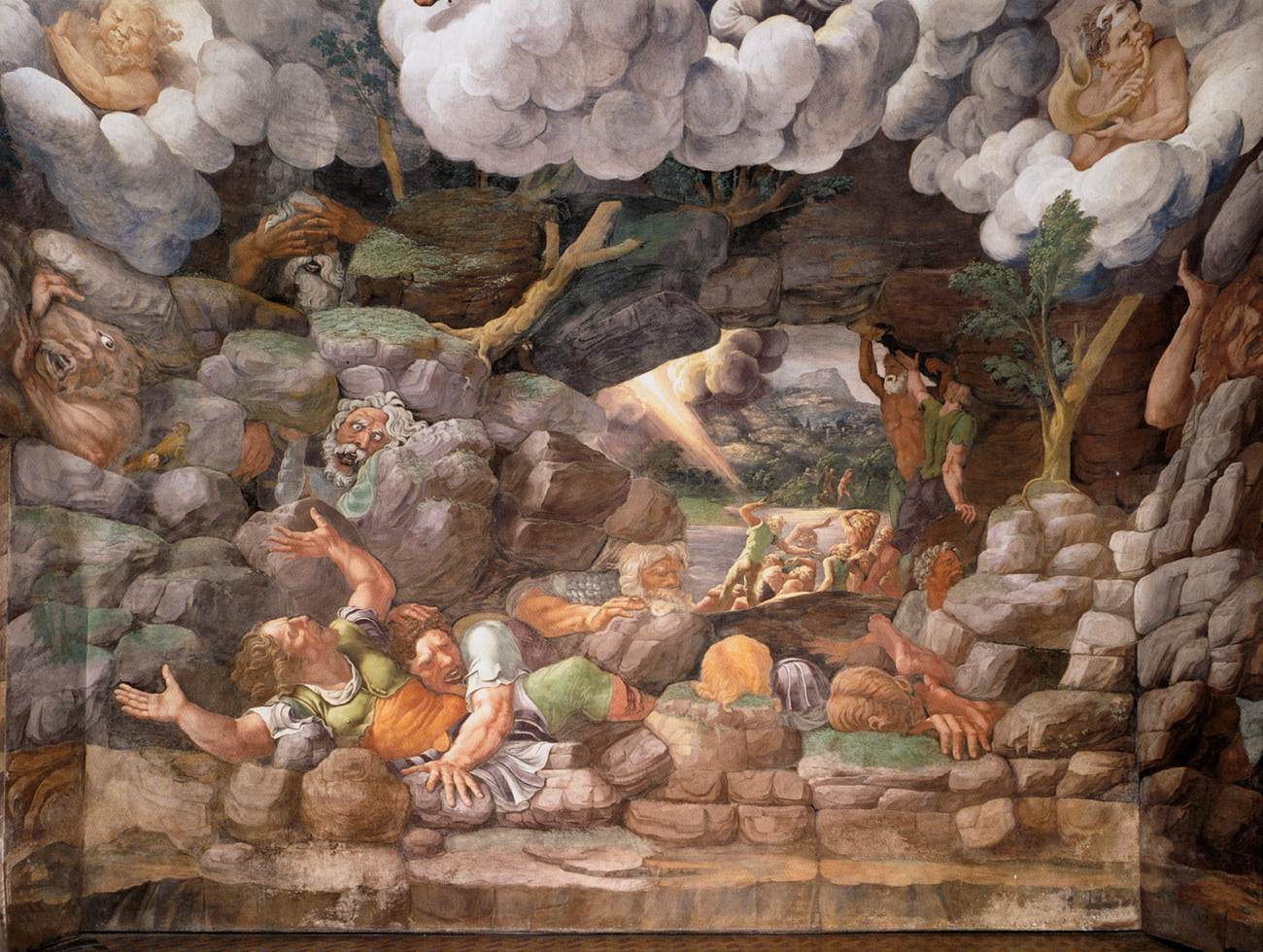
Fotoblog de mooiste fresco's in de Sala dei Giganti Italië Uitgelicht
by GIULIO ROMANO and assistants The Sala dei Giganti is located in the southern corner of the Palazzo del Tè. The walls and the ceiling of the room are painted with a single continuous scene of giant figures. It is an apocalyptic catastrophe into whose centre the viewer enters.
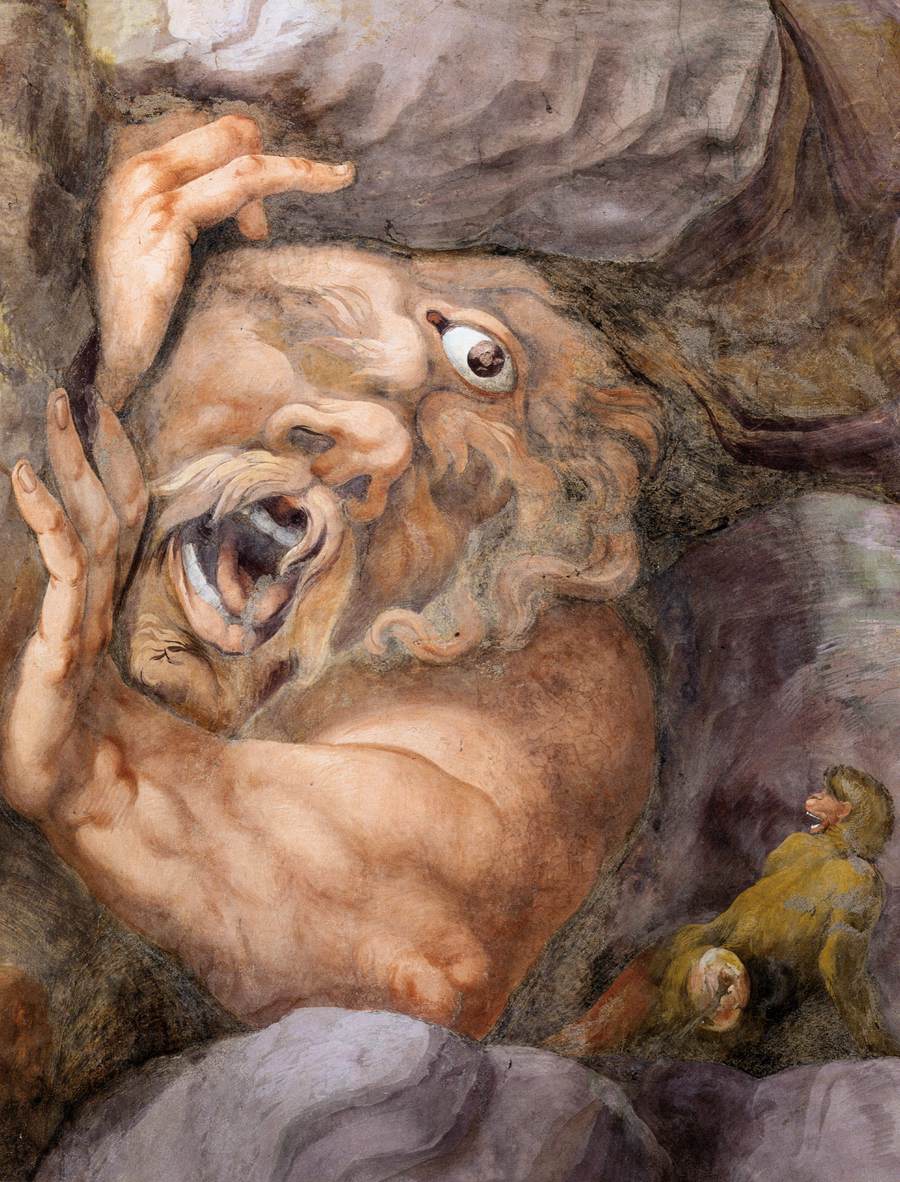
Spaesamento e meraviglia la Sala dei Giganti di Giulio Romano Mantova Arte.it
Giulio Pippi ( c. 1499 - 1 November 1546), known as Giulio Romano ( US: / ˌdʒuːljoʊ rəˈmɑːnoʊ / JOOL-yoh rə-MAH-noh, [1] Italian: [ˈdʒuːljo roˈmaːno]; French: Jules Romain ), [a] was an Italian painter and architect.

Palazzo TE Mantova La sala dei Giganti di Giulio Romano ricarolricecitocororo Arte
Giulio Romano (1499-1546): Biography of Mannerist Painter, Noted for Palazzo del Te Fresco Paintings, Villa Farnesina.. the fresco painting in the Sala dei Giganti (1532-4), in the south, is a seething mass of exaggerated forms which cover the entire room from floor to ceiling. The result was much admired by Vasari. Other rooms.

Camera dei Giganti by Giulio Romano, Palazzo del Tè, Mantua
Written by: Meryam Joobeur. Produced by: Maria Gracia Turgeon, Habib Attia. Mohamed is deeply shaken when his oldest son Malik returns home after a long journey with a mysterious new wife. 'The Fall of the Gigants' was created in 1532 by Giulio Romano in Mannerism (Late Renaissance) style. Find more prominent pieces of mythological painting.

De mooiste fresco's in de Sala dei Giganti Italië Uitgelicht
Nella pittura di Giulio Romano troviamo lo stile del maestro Raffaello Sanzio, però più maestosa e imponente e meno raffinata. Secondo alcuni questo affresco potrebbe rimandare alla vittoria di Carlo V sui protestanti, a memoria della visita che l'imperatore aveva effettuato a Mantova poco tempo prima. Note ^ Metamorfosi I, 151ss
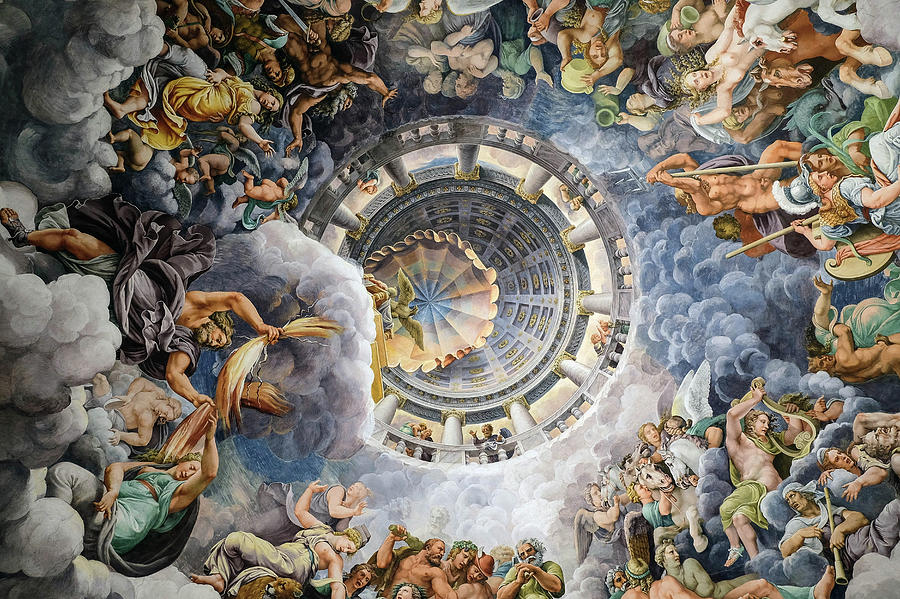
Chamber of the giants, 1532 Painting by Giulio Romano
The ceiling of the Sala dei Giganti at the Palazzo Te (1524-34), Giulio Romano and workshop. At the heart of the Palazzo Te is Romano's crowning achievement. Every inch of the Sala dei Giganti (room of Giants) - down to the fireplace - is incorporated into this circular trompe l'oeil composition of the gods repelling the hapless.

Giulio Romano, ‘Fall of the Giants, fresco in the Sala dei Giganti, Palazzo del Te’, 15301532
Original. Derogatory. Refined. Hyper-decorative. Courtly. Anti-classical. Classicizing. All of these words (and many more!) have been used to describe mannerist art, which begins in the 16th century. But what is it, and how could it possibly prompt so many contradictory descriptors?
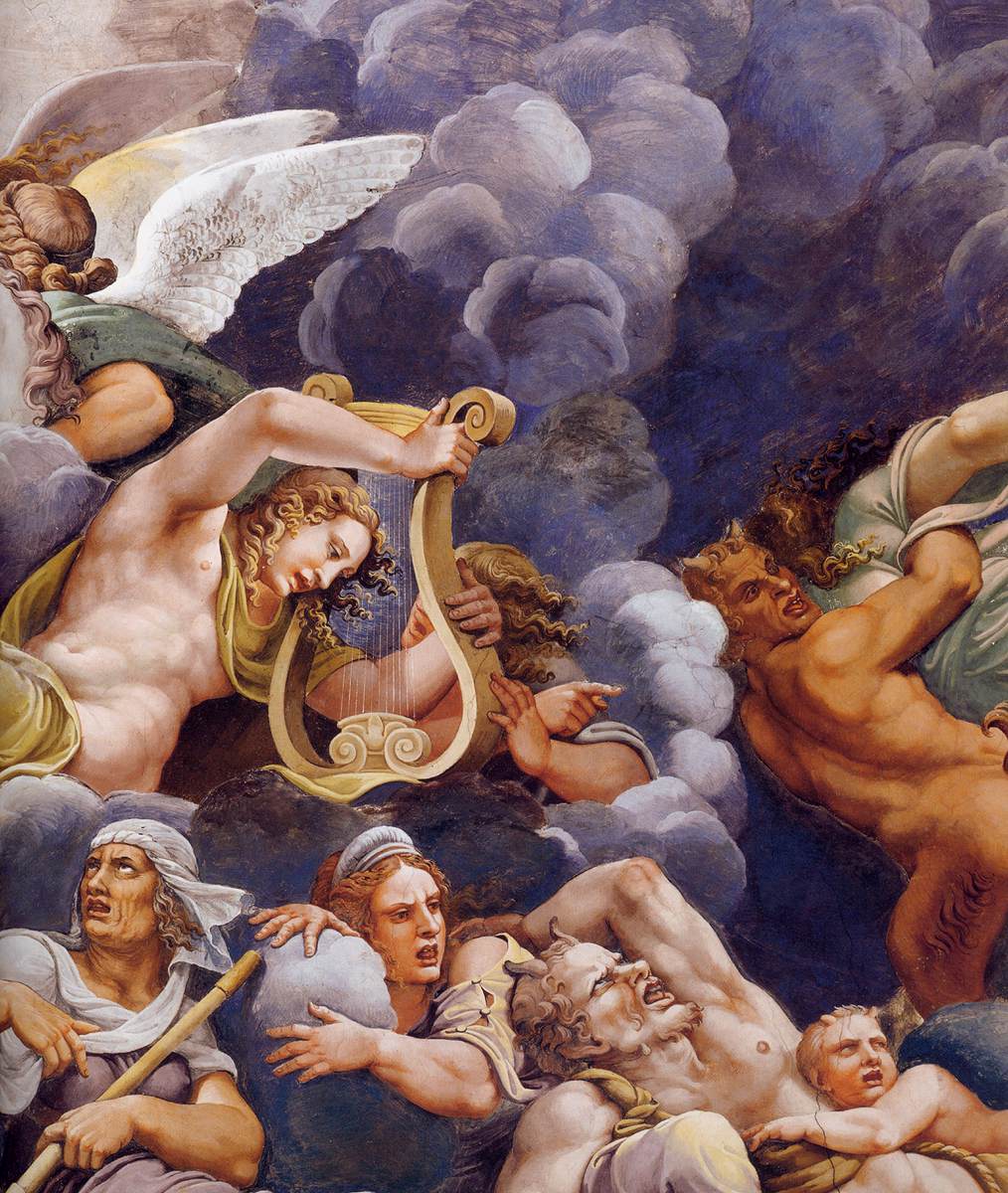
De mooiste fresco's in de Sala dei Giganti Italië Uitgelicht
's most famous fresco: Giulio Romano's illusionism invents a dome overhead and dissolves the room's architecture in the Fall of the Giants Like the Villa Farnesina in Rome, the suburban location allowed for a mixing of both palace and villa architecture.

Giulio Romano, sala dei Giganti, Palazzo Te, Mantova Brutta fine. The Bad end Giulio Romano
by GIULIO ROMANO and assistants. The Sala dei Giganti is located in the southern corner of the Palazzo del Tè. The walls and the ceiling of the room are painted with a single continuous scene of giant figures. It is an apocalyptic catastrophe into whose centre the viewer enters. The room's decoration represents Jupiter punishing the giants for.
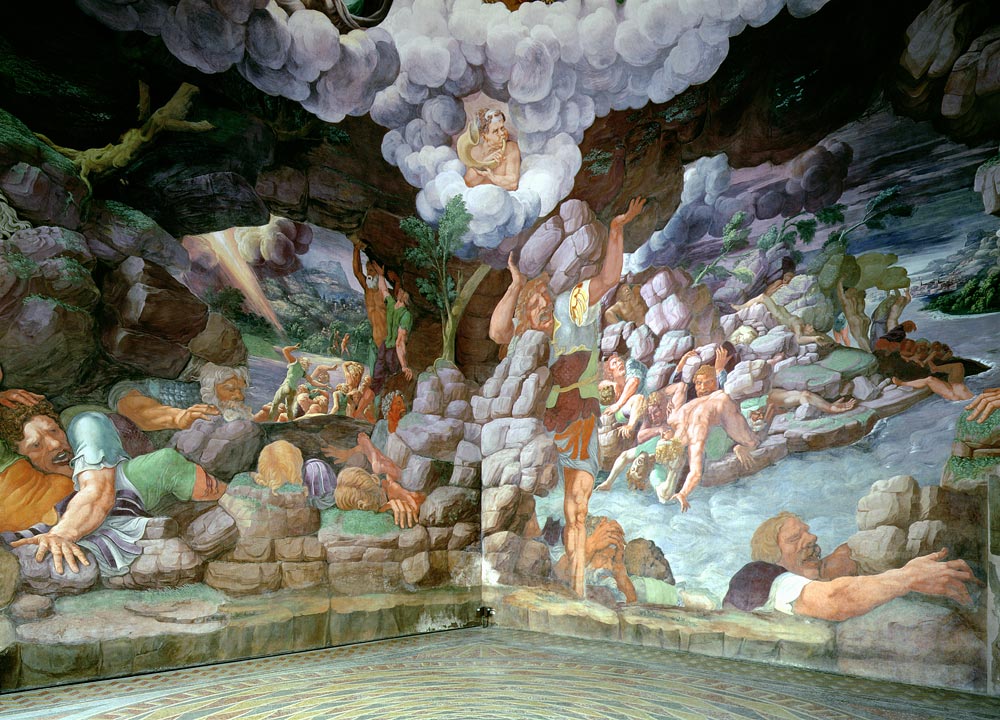
Sala dei Giganti, view of two walls show Giulio Romano Als reproductie kunstdruk of als
GIULIO ROMANO (b. ca. 1499, Roma, d. 1546, Mantova). Sala dei Giganti, Palazzo del Tè, Mantua: From the summit of Mount Olympus, the father of the gods hurls his thunderbolts at the earth, sweeping away the giants and the awkward pile of rocks intended to support their ascent into the heavens. The pantheon of pagan divinities that surround.

Details of the fresco by Giulio Romano (16th century) in the Camera dei Giganti (Chamber of the
Esme Garlake asks whether an ecocritical re-reading of Giulio Romano's fresco can help us to reflect on human reactions to disasters and conflict, as well as the more unexpected ways in which the masterpiece connects us to previous generations.
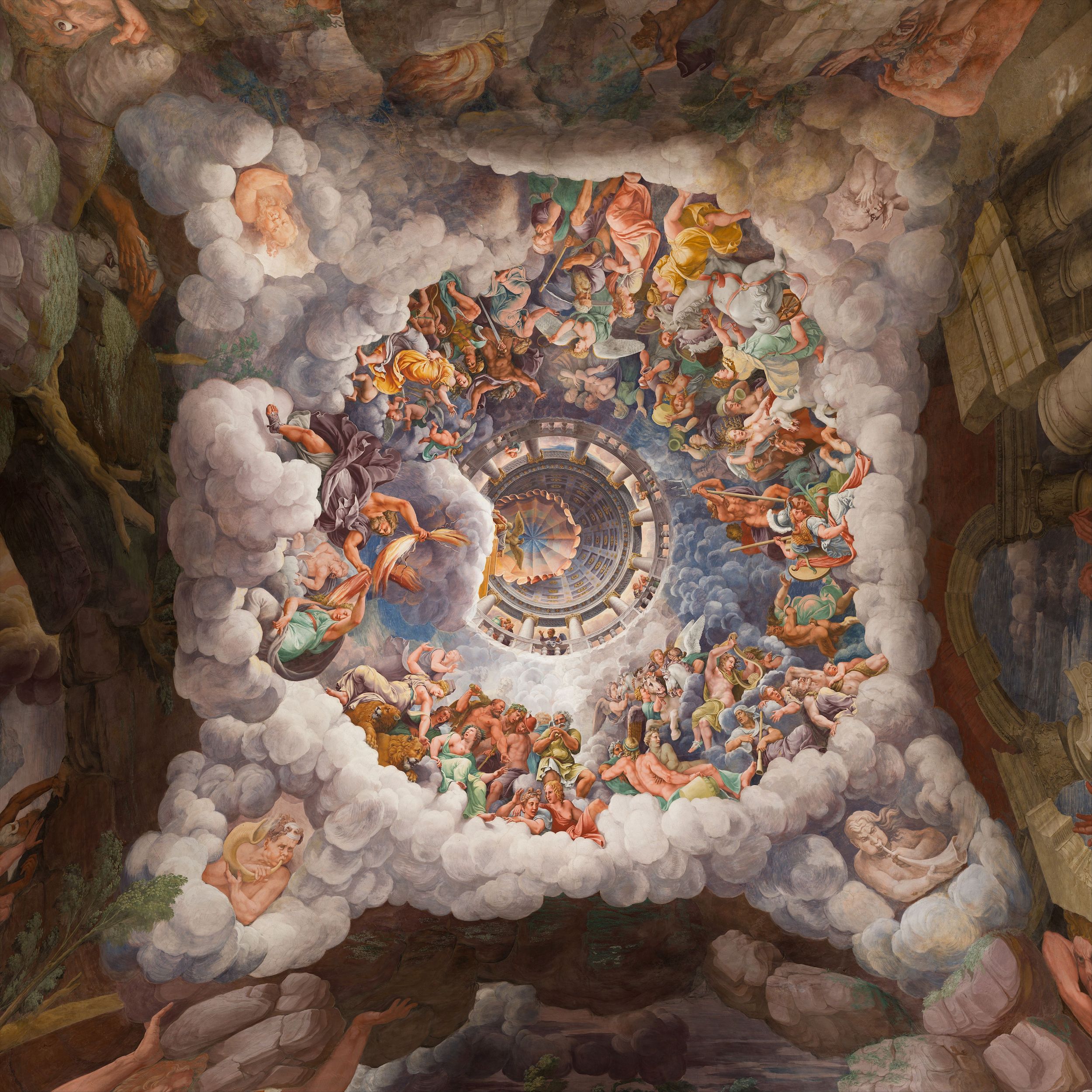
The Fall of the Gigants Giulio Romano 作品高清大图 麦田艺术
The Fall of the Giants is a fresco by the Italian Renaissance artist Giulio Romano. Born in Rome Giulio Romano was a pupil of Raphael. In the year 1522 he was courted by Federico II Gonzaga, the ruler of Mantua, who wanted him as his court artist as he was especially attracted by his skill as an architect.